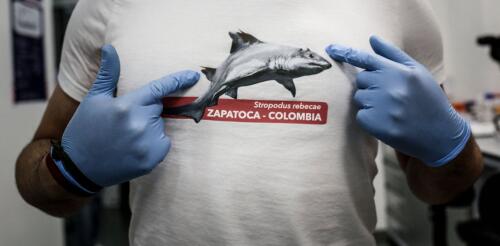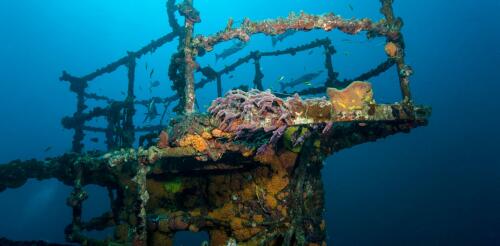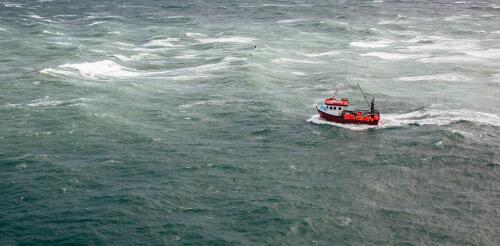Oceans
Human fear of sharks has deep roots. Written works and art from the ancient world contain references to sharks preying on sailors as early as the eighth century B.C.E. Relayed back to land, stories about shark encounters have been embellished and amplified. Together with the fact that from time to time – very rarely – sharks bite humans, people have been primed for centuries to imagine terrifying situations at sea. In 1974, Peter Benchley’s bestselling novel “Jaws” fanned this fear into a wildfire that spread around the world. The book sold more than 5 million copies in the U.S. within a year and was quickly followed by Steven Spielberg’s 1975 movie, which became the highest-grossing film in history at that time. Virtually all audiences embraced the idea, depicted vividly in the movie and its sequels, that sharks were malevolent, vindictive creatures that prowled coastal waters seeking to feed on unsuspecting bathers. But “Jaws”...
All of the saltwater bodies on Earth make up one big ocean. But within it, there is infinite variety – just ask any scuba diver. Some spots have more coral, more sea turtles, more fish, more life. “I’ve been diving in many places around the world, and there are few locations like the Fuvahmulah Atoll in the Maldives,” Amanda Batlle-Morera, a research assistant with the Important Shark and Ray Areas project, told me. “You can observe tiger sharks, thresher sharks, scalloped hammerheads, oceanic manta rays and more, without throwing out bait to attract them.” Identifying areas like Fuvahmulah that are especially important to certain species is a long-standing strategy for protecting threatened land animals, birds and marine mammals, such as whales and dolphins. Now our team of marine conservation scientists at the Important Shark and Ray Areas project is using it to help protect sharks and their relatives. I am a marine conservation biologis...
When people hear about underwater reefs, they usually picture colorful gardens created from coral. But some reefs are anchored to much more unusual foundations. For more than a century, people have placed a wide assortment of objects on the seafloor off the U.S. coast to provide habitat for marine life and recreational opportunities for fishing and diving. Artificial reefs have been created from decommissioned ships, chicken transport cages, concrete pipes, rail cars and more. We study how ocean-dwelling fish use artificial reefs in the U.S. and beyond. Through our research, we have learned that artificial reefs can be hot spots for large predatory fish such as groupers and jacks. They also can serve as stepping stones for reef fish expanding their range northward with warming water temperatures and as rest stops for sharks. Artificial reefs can be strategically designed and placed to optimize fish habitat. But although they provide valuable ecological services, no one has in...
Capturing carbon dioxide from the air or industries and recycling it can sound like a win-win climate solution. The greenhouse gas stays out of the atmosphere where it can warm the planet, and it avoids the use of more fossil fuels. But not all carbon-capture projects offer the same economic and environmental benefits. In fact, some can actually worsen climate change. I lead the Global CO₂ Initiative at the University of Michigan, where my colleagues and I study how to put captured carbon dioxide (CO₂) to use in ways that help protect the climate. To help figure out which projects will pay off and make these choices easier, we mapped out the pros and cons of the most common carbon sources and uses. Replacing fossil fuels with captured carbon Carbon plays a crucial role in many parts of our lives. Materials such as fertilizer, aviation fuel, textiles, detergents and much more depend on it. But years of research and the climate changes the world is already experienci...
Humans are racing to harness the ocean’s vast potential to power global economic growth. Worldwide, ocean-based industries such as fishing, shipping and energy production generate at least US$1.5 trillion in economic activity each year and support 31 million jobs. This value has been increasing exponentially over the past 50 years and is expected to double by 2030. Transparency in monitoring this “blue acceleration” is crucial to prevent environmental degradation, overexploitation of fisheries and marine resources, and lawless behavior such as illegal fishing and human trafficking. Open information also will make countries better able to manage vital ocean resources effectively. But the sheer size of the ocean has made tracking industrial activities at a broad scale impractical – until now. A newly published study in the journal Nature combines satellite images, vessel GPS data and artificial intelligence to reveal human industrial activities across the...




